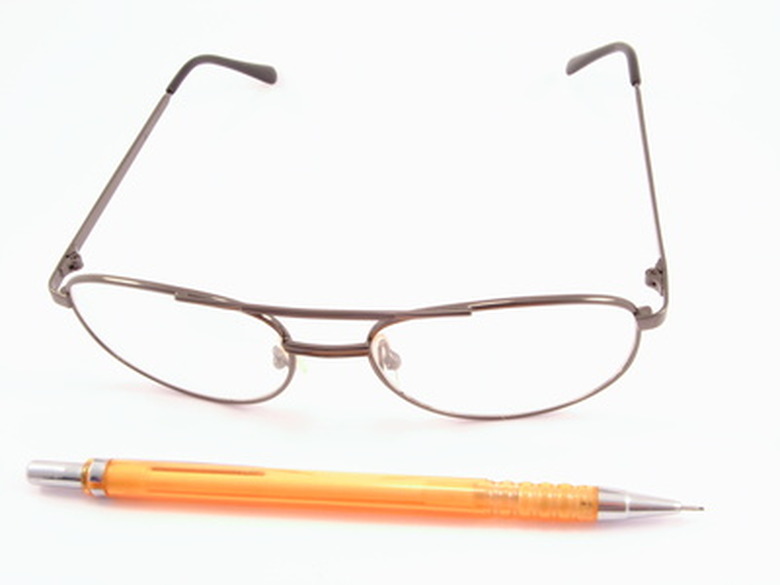How To Measure Lens Thickness
The thickness of an eyeglass lens is dictated by its prescription. You can calculate lens thickness by entering pertinent information regarding your prescription, such as sphere power, cylinder power, lens material and frame information. If you do not have this information, then lens thickness can be measured directly using an external or clamping-style caliper, depending on the type of lens. Both calipers work by clamping onto a lens and providing the measurement via a dial or measurement scale. When you measure lens thickness, only the thickest part should be measured.
Step 1
Look at the lens and decide whether it's thicker on the edge or at the center. Lenses for nearsighted people will be thicker on the edge. Lenses for farsighted people will be thicker in the center.
Step 2
Choose the type of caliper to use. To measure center thickness, use an external caliper, a caliper with protruding pinchers. To measure edge thickness, a clamping-style caliper will work best.
Step 3
Clamp the caliper onto the thickest location until the pinchers or clamps barely touch both sides of the lens.
Step 4
Read the measurement on the caliper. It will be displayed on a dial or a marker on the caliper.
Things Needed
- External caliper
- Clamp caliper
Cite This Article
MLA
Taylor, C.. "How To Measure Lens Thickness" sciencing.com, https://www.sciencing.com/measure-lens-thickness-7626767/. 24 April 2017.
APA
Taylor, C.. (2017, April 24). How To Measure Lens Thickness. sciencing.com. Retrieved from https://www.sciencing.com/measure-lens-thickness-7626767/
Chicago
Taylor, C.. How To Measure Lens Thickness last modified March 24, 2022. https://www.sciencing.com/measure-lens-thickness-7626767/
